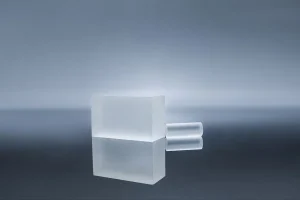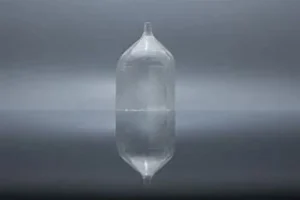Comprehensive Understanding of Thulium-Doped Crystals
In the ever-evolving world of optical technology, thulium-doped crystals have garnered significant attention. These specially doped crystals, imbued with thulium ions, have carved a unique niche in the realm of optical amplification and laser systems. The unmatched qualities they offer, particularly the propensity to facilitate high-energy lasers, make them a coveted resource in the industry. This in-depth analysis will help comprehend the science behind these thulium-doped crystals, their pivotal role in laser systems, their varying types, techniques for optimization, and the potential prospects they hold for the future.
The Unique Characteristics of Thulium Ions
Thulium, a lanthanide series element, holds unique physical and atomic properties that make it a prime candidate for doping into laser crystals. Two key characteristics of thulium ions warrant particular attention – their energy levels and spectral properties.
Energy Levels of Thulium Ions
Thulium ions possess unique energy levels that facilitate absorption and emission of light, especially in the infrared region. This characteristic gives thulium-doped crystals a distinctive edge in laser applications.
The energy levels in thulium ions are instrumental in promoting cross-relaxation processes. Cross-relaxation refers to the non-radiative process wherein energy is transferred between similar ions. This energy transfer is critical for enhancing the laser-induced fluorescence and leads to high quantum efficiency in thulium-doped crystals. These processes result in efficient laser operation, thus underlining the importance of thulium ions.
Furthermore, the unique energy levels in thulium ions facilitate upconversion processes. Upconversion is an absorption process where two or more low-energy photons are absorbed and converted into one high-energy photon. This process is highly beneficial in generating visible output from infrared excitation and thus, extends the utility of thulium-doped crystals in diverse laser applications.
Spectral Properties of Thulium Ions
Another defining characteristic of thulium ions is their broad absorption spectrum. The absorption spectrum of an ion signifies the range of wavelengths that it can absorb. Thulium ions showcase an extensive absorption spectrum, spanning from visible to infrared light. This broad spectrum, coupled with the high absorption cross-section, makes thulium a superior doping material.
The remarkable spectral range of thulium contributes to an exceptional gain bandwidth in laser systems. Gain bandwidth is the range of wavelengths over which amplification can occur in a laser medium. A wider gain bandwidth facilitates generation of short, ultrafast pulses, which are a key requirement in numerous modern laser applications, including telecommunications, materials processing, and medical diagnostics.

The Advantage of Thulium-Doped Crystals in Laser Systems
The incorporation of thulium ions into various crystal hosts has significantly advanced the field of laser technology. The crystals doped with thulium ions are well-regarded for their enabling capabilities in two critical areas – broadband amplification and generation of high-energy laser pulses.
Enabling Broadband Amplification
The feature of broadband amplification by thulium-doped crystals sets them apart. In the age of high-speed communications, broadband amplification is highly desired. The term ‘broadband’ pertains to the wide band of wavelengths or frequencies over which information can be transmitted.
Thulium-doped crystals exhibit remarkable broadband amplification, making them an ideal gain medium for broadband amplifiers in telecommunication systems. The extensive absorption spectrum of thulium ions, as discussed previously, allows for a wide range of wavelengths to be amplified, thus enabling the production of short, ultrafast laser pulses. These ultrafast pulses are crucial for next-generation communication systems that require high data transfer rates.
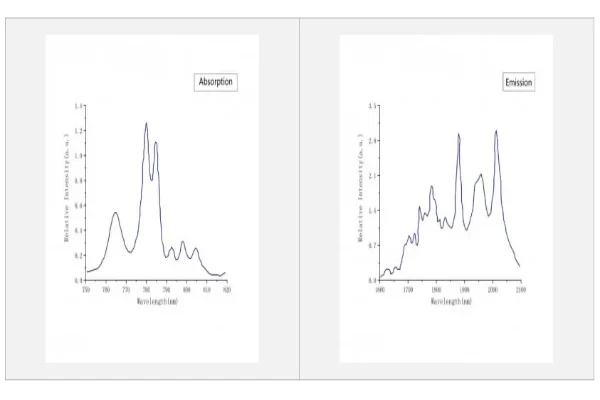
Moreover, the wide gain bandwidth in thulium-doped crystals allows for tunable laser output. A tunable laser can adjust its output wavelength within a certain range, which is highly advantageous in numerous applications such as remote sensing, spectroscopy, and telecommunications.
Generation of High-Energy Laser Pulses
Thulium-doped crystals empower the creation of high-energy lasers. High-energy lasers are those that operate at very high power levels. The unique energy levels of thulium ions allow for efficient energy transfer, leading to the generation of high-energy laser pulses.
These high-energy lasers have diverse applications. They are heavily employed in scientific research for studying the interaction of intense light with matter. In the industrial sector, they are used for materials processing tasks such as cutting, welding, and drilling due to their high power density. They also find usage in the medical field for procedures like laser surgery and phototherapy. The ability of thulium-doped crystals to generate high-energy laser pulses makes them an invaluable asset in these areas.
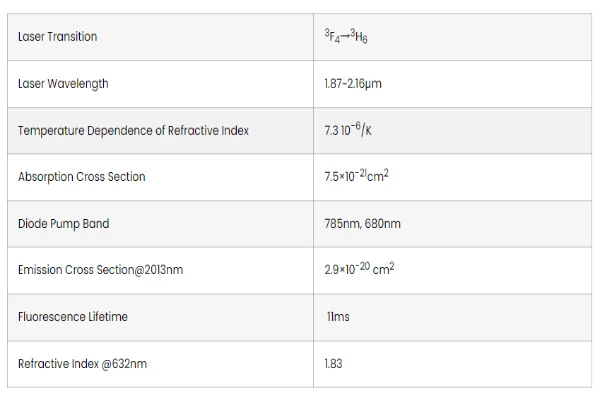
Various Types of Thulium-Doped Crystals
The properties of thulium-doped crystals vary depending on the host crystal into which thulium ions are introduced. Two types of thulium-doped crystals commonly used are Thulium-Doped Yttrium Aluminium Garnet (Tm:YAG) and Thulium-Doped Lithium Niobate (Tm:LiNbO3).
Thulium-Doped Yttrium Aluminium Garnet (Tm:YAG)
Tm:YAG crystals are renowned for their superior thermal and mechanical properties. They offer high laser damage threshold, making them suitable for high-energy laser systems. The high thermal conductivity of YAG helps in effective heat dissipation, which is essential for stable laser operation. Additionally, the YAG host provides a stable and robust environment for thulium ions, enhancing their lasing efficiency. These properties make Tm:YAG an excellent choice for various laser applications, including medical and industrial lasers.
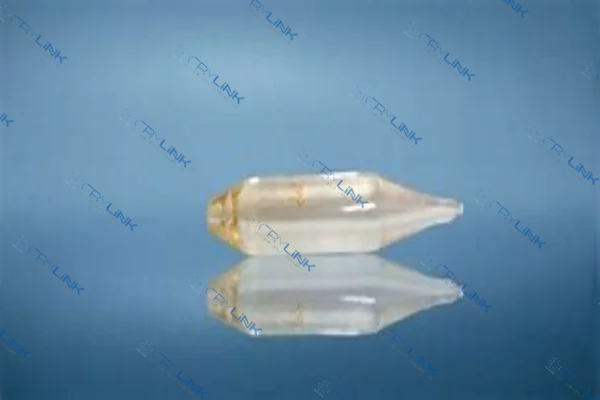
Thulium-Doped Lithium Niobate (Tm:LiNbO3)
Tm:LiNbO3 crystals provide broad emission bandwidths, making them a good choice for broadband amplification in high-speed communication systems. The LiNbO3 host crystal possesses a large electro-optic coefficient, which is beneficial for modulating and switching light. Moreover, it offers high nonlinear optical effects, which are useful in frequency conversion processes like second harmonic generation. As such, Tm:LiNbO3 is an attractive candidate for a range of applications, including optical waveguides, holographic storage, and telecommunications.
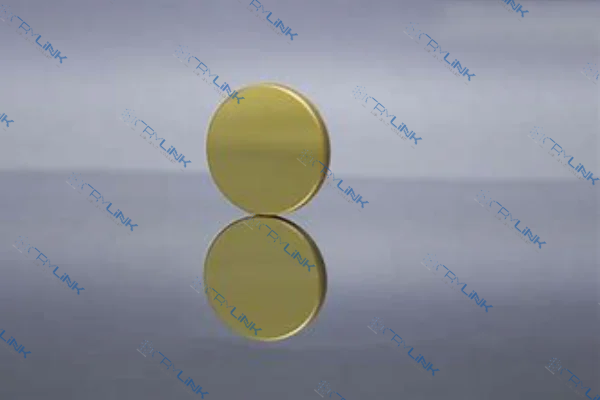
Optimization Techniques for Thulium-Doped Crystal Lasers
To maximize the performance of thulium-doped crystal lasers, several optimization techniques can be employed. These include thermal management and pump source optimization.
Thermal Management
In a laser system, heat generation is an inevitable consequence. The energy not converted into laser light turns into heat within the laser medium. If not managed appropriately, this heat can cause thermal lensing, leading to beam quality degradation, or worse, damage to the laser crystal.
Proper thermal management is vital to enhance the performance of thulium-doped crystal lasers. Efficient heat sinking methods need to be employed to remove excess heat. Forced air or liquid cooling are commonly used cooling methods, with the latter being more effective for high-power lasers. The use of a high thermal conductivity host crystal, like YAG, can also aid in effective heat dissipation.
Pump Source Optimization
Another critical aspect in optimizing the performance of thulium-doped crystal lasers is the pump source. The pump source is responsible for supplying the initial energy that gets amplified in the laser medium. The choice and optimization of the pump source can have a significant impact on the overall efficiency and output power of the laser.
One common method of pump source optimization is the use of double-end pumping. In this technique, the pump light is introduced from both ends of the laser crystal, providing a more uniform distribution of pump energy and reducing thermal effects.
Choosing a more efficient laser diode as the pump source can also enhance the laser performance. A laser diode with high power conversion efficiency and a suitable emission wavelength that matches the absorption peak of thulium ions can maximize the pump power absorbed by the crystal, thereby increasing the laser output power.
Future Perspectives of Thulium-Doped Crystals
As optical technology progresses, the demand for efficient, high-power laser systems is on the rise. Thulium-doped crystals, with their unique properties and capabilities, hold significant potential to meet this demand.
In high-speed communication systems, the broadband amplification offered by thulium-doped crystals can facilitate higher data transfer rates. As the world becomes increasingly connected, the need for fast, reliable communication systems is paramount. Thulium-doped crystals can play a critical role in fulfilling this need.
In the industrial sector, high-energy lasers are essential for various materials processing tasks. Thulium-doped crystals, capable of generating high-energy laser pulses, can revolutionize the way these tasks are performed, leading to increased efficiency and productivity.
In the medical field, lasers are being used for an array of procedures. High-energy lasers can offer precise, minimally invasive treatment options. Thulium-doped crystals can contribute significantly to advancements in medical laser technology.
While these are the areas where thulium-doped crystals are currently being employed, their potential applications are not limited to these fields. As research continues in this area, new uses and benefits of these crystals are likely to be discovered, underscoring their significance in the future of laser technology.

Conclusion
Thulium-doped crystals, known for their unique properties and promising capabilities, serve as a remarkable broadband gain medium for high-energy laser systems. The thulium ions embedded in these crystals exhibit unique energy levels and an extensive absorption spectrum, which are key in producing high-energy lasers and developing broadband gain media.
These crystals come in different types, each with its own unique set of properties, making them suitable for various applications. Techniques like thermal management and pump source optimization can further enhance their performance, making them even more valuable.
As technology advances, the potential applications of thulium-doped crystals continue to expand. They have the potential to revolutionize high-speed communication systems, industrial processing, and medical procedures. The understanding and utilization of thulium-doped crystals are still in the early stages, and their full potential is yet to be realized.
With the growing demand for efficient, high-power laser systems, the role of thulium-doped crystals is set to become increasingly important. As research in this field progresses, we can expect to see these crystals playing an even bigger part in the future of laser technology.
FAQs
- Q1: Why are Thulium ions important in laser systems?
- A1: Thulium ions have unique energy levels that facilitate absorption and emission of light, particularly in the infrared region, making them ideal for laser applications. Their energy levels promote efficient energy transfer processes, leading to the generation of high-energy laser pulses.
- Q2: What makes thulium-doped crystals suitable for broadband amplification?
- A2: Thulium-doped crystals exhibit remarkable broadband amplification due to the extensive absorption spectrum of thulium ions, which allows for a wide range of wavelengths to be amplified. This feature makes them desirable for high-speed communication systems that require high data transfer rates.
- Q3: What are some examples of thulium-doped crystals, and where are they used?
- A3: Thulium-doped Yttrium Aluminium Garnet (Tm:YAG) and Thulium-doped Lithium Niobate (Tm:LiNbO3) are common examples. Tm:YAG is widely used in medical and industrial lasers due to its high laser damage threshold. Tm:LiNbO3, with its broad emission bandwidth, is employed in optical waveguides, holographic storage, and telecommunications.
- Q4: How can the performance of thulium-doped crystal lasers be optimized?
- A4: Techniques like proper thermal management and pump source optimization can enhance the performance of thulium-doped crystal lasers. Efficient heat sinking methods are essential for removing excess heat, while the use of double-end pumping and efficient laser diodes can optimize the pump power absorbed by the crystal.
- Q5: What are the potential applications of thulium-doped crystals in the future?
- A5: Thulium-doped crystals hold significant potential for the future. They can revolutionize high-speed communication systems with their broadband amplification capabilities. Their ability to generate high-energy laser pulses can enhance efficiency and productivity in industrial processing and bring advancements in medical laser technology. As research progresses, their potential applications are likely to expand.


